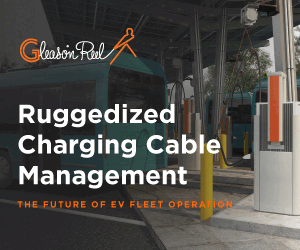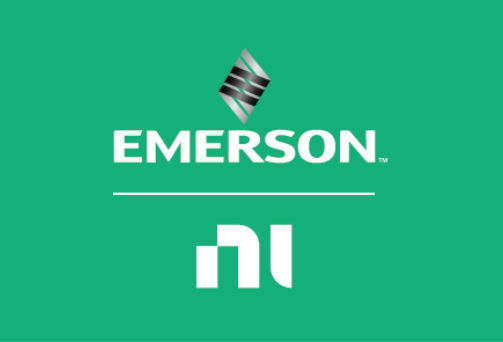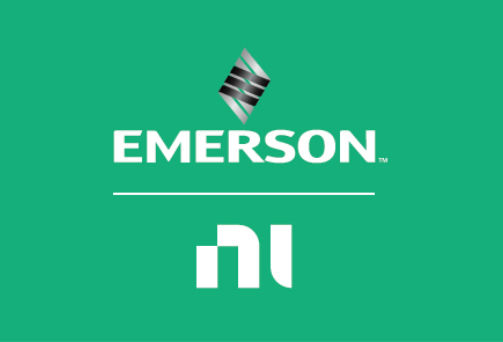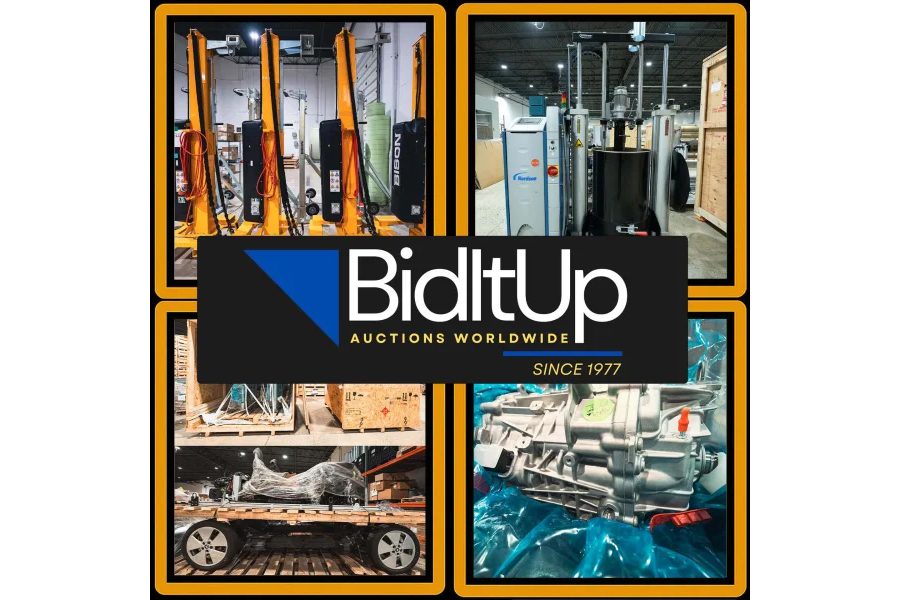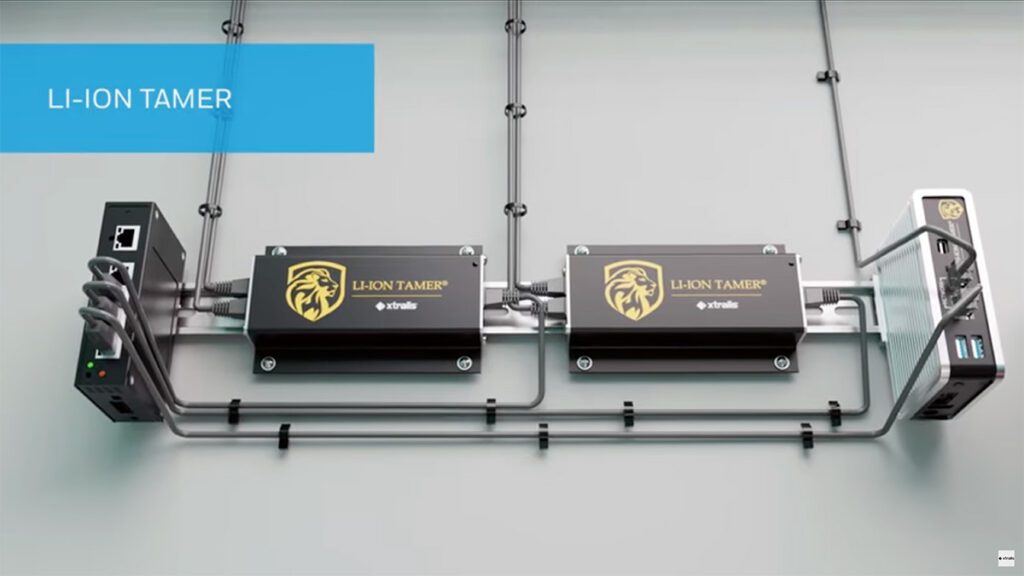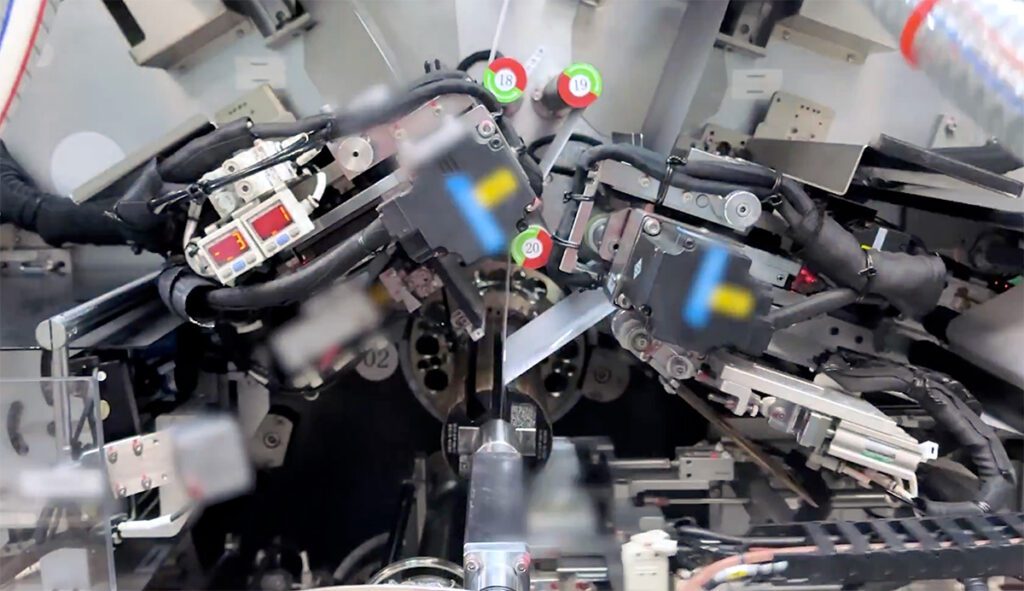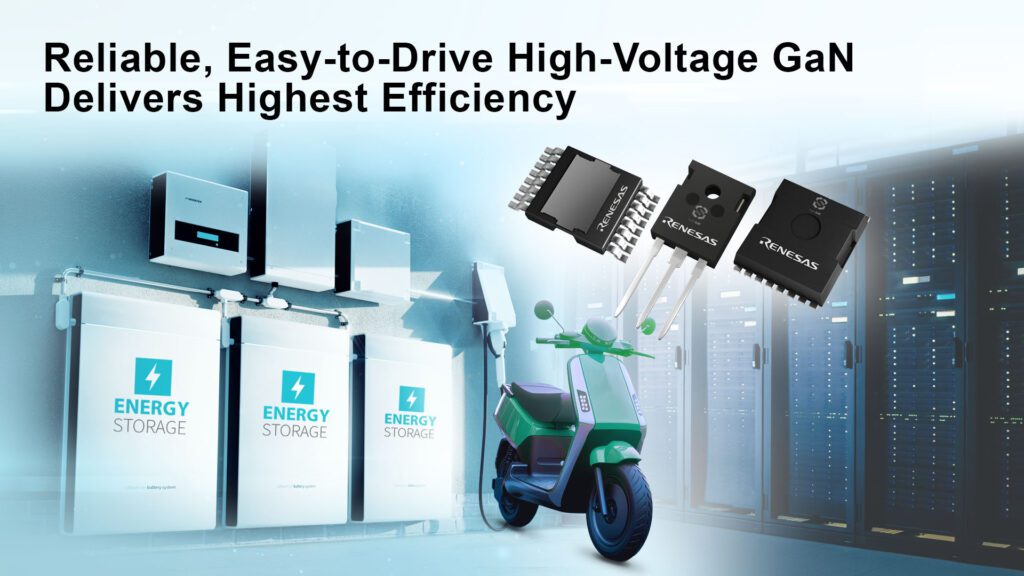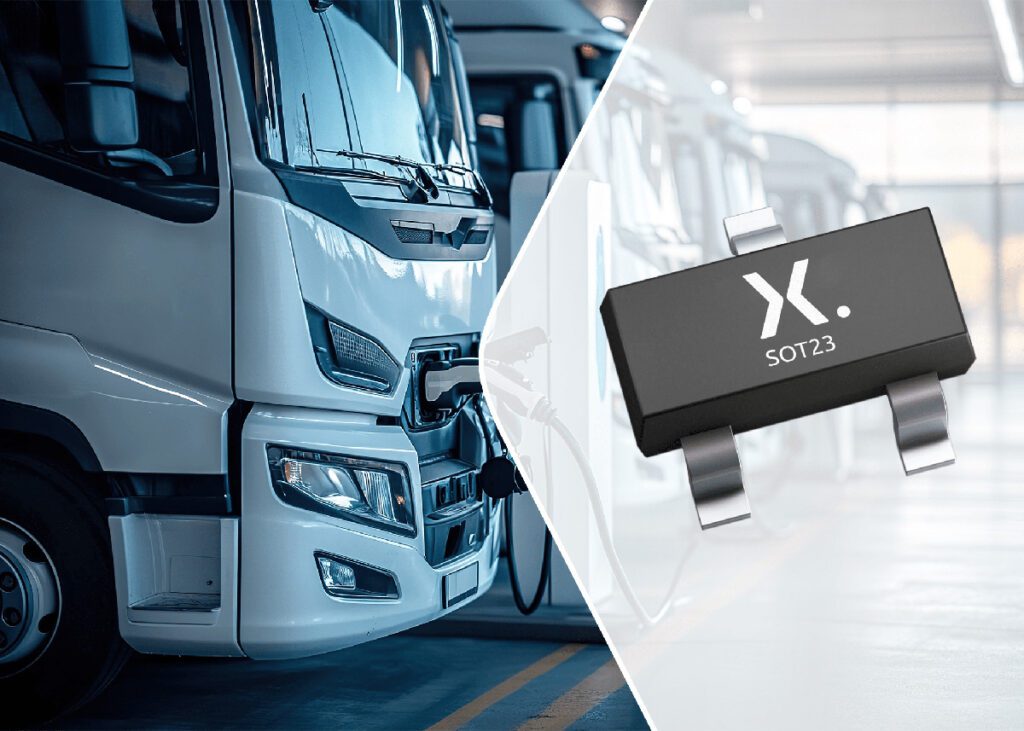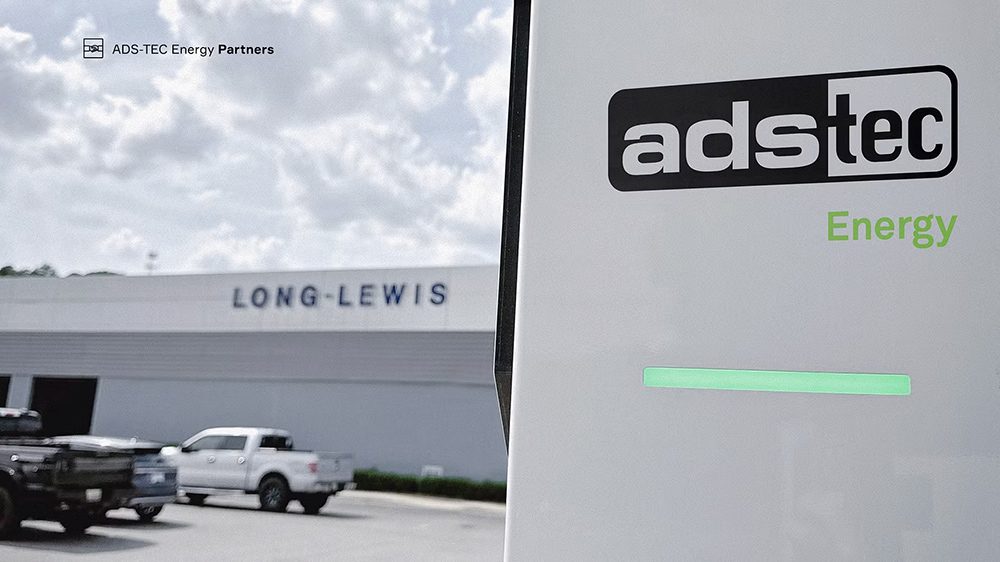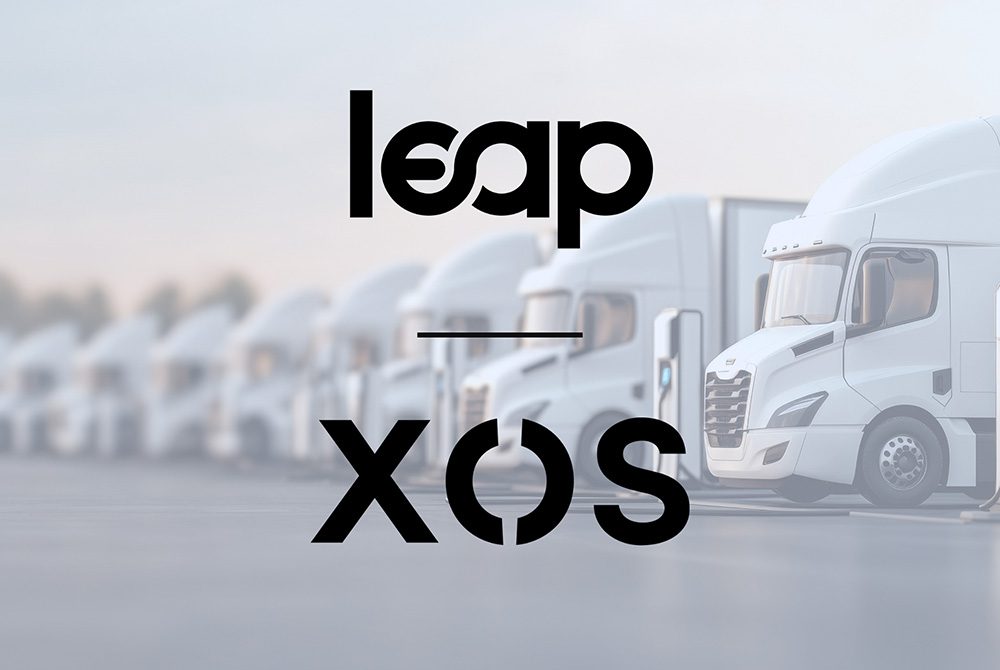- Thanks to the “Buy American” requirements of the Bipartisan Infrastructure Law (BIL) and Inflation Reduction Act (IRA), and similar provisions in the EU’s new Battery Directive, traceability is becoming a critical function in the EV industry.
- OPTEL has partnered with test, inspection and certification specialist Bureau Veritas to create a comprehensive traceability service called V-Trace, which companies and government regulators can use to follow products through their supply chains, from extraction of the raw materials to final assembly.
- OPTEL’s Optchain platform is a “digital control tower” that gives automakers and battery manufacturers an overview of their supply chains.
- OPTEL uses globally-recognized standards to facilitate the sharing of data with partners and government regulators.
Q&A with OPTEL’s Ken Fallu
Traceability is a topic we’re beginning to hear a lot about in the EV industry. The term refers to a process for documenting the source of a product, along with all the links in the supply chain, and it has long been important in various industries. Perhaps the best-known examples are aerospace, food and pharmaceuticals—if a plane crashes, or a bunch of people get sick, investigators need to be able to find out where a defective component or a bad batch of food or drugs came from. However, there are many reasons that companies and regulatory agencies put traceability processes in place: documenting ESG claims; combatting product counterfeiting; proving that products are exempt from tariffs; and many others.
In the EV industry, there are two separate (but related) reasons to establish a traceability process. The first is sustainability, and it’s a bit of a fraught topic, because the environmental footprint of EV components is a favorite trope of the anti-EV disinformation movement. If you use social media, you’ve seen the pictures of ugly open-pit mines, and the memes of clueless greenies oblivious to the evils caused by the extraction of lithium, cobalt and other minerals.
In the EV industry, there are two separate (but related) reasons to establish a traceability process: sustainability and documenting the country of origin.
Of course, the global depredations of the oil and agriculture industries are long-standing and well-documented, but as environmentalists, we need to hold ourselves to much higher standards. There are problems associated with the extraction of many EV-related raw materials, and these need to be documented, and minimized as much as possible. That’s why sustainability-related traceability is so important (and why automakers and battery suppliers have been concerned about it for some time).
Another function of traceability solutions is documenting the country of origin for raw materials and assembled components. The importance of this soared with the passage of the Bipartisan Infrastructure Law (BIL) and Inflation Reduction Act (IRA), both of which include eligibility requirements that call for certain proportions of the components that go into EVs and EVSE to be sourced and/or processed in North America or free-trade partner countries. Incentive programs currently being developed in the EU include similar requirements.
Statesmen are keen to bring raw material mining and processing to North America and Europe not only to boost economic activity at home, but also because, as the war in Ukraine has shockingly demonstrated, it’s a bad idea to become dependent on hostile or unstable countries for critical materials.
The issues of sustainability and encouraging domestic supply chains are closely related. Environmental standards for mining and industrial processes are generally considered to be stricter in North America and Europe than elsewhere, and furthermore, shortening supply chains by bringing raw material production closer to manufacturing sites has important environmental benefits.
Automakers that want to qualify for incentives are going to have to document every link in their supply chains, and that’s where independent traceability services come in.
So, there are many good reasons for governments to incentivize automakers to bring supply chains home. But regulators aren’t going to take companies’ words for it that the raw materials used to make their batteries comes from approved places. Automakers that want to qualify for incentives are going to have to document every link in their supply chains, and that’s where independent traceability services come in.
Charged recently spoke with execs from two companies that have partnered to create a comprehensive traceability service called V-Trace, or Verified Traceability Solution. Bureau Veritas handles on-site verification and third-party independent auditing (see Part Two of this series), and OPTEL provides a digital platform that companies and government regulators can use to follow products through their supply chains, from extraction of the raw materials to final assembly.
Battery-maker Verkor is the most recent announced customer for V-Trace, but the companies say they are in discussion with many others, both battery suppliers and automakers.
Charged spoke with Ken Fallu, OPTEL’s Global Head of Strategy for Mining and Environment.
Charged: I know traceability has always been important in certain industries. Do you provide a lot of services to the auto industry?
Ken Fallu: Yes, but it’s just starting. I’ve been in traceability for more than 30 years—we started mostly in the pharmaceutical industry to provide traceability for FDA regulations. But the auto industry, this is something new. For the last two or three years, they’re starting to bring this technology to their supply chain, especially for batteries.
All the new gigafactories that will be building batteries in the coming years, they’re focusing on proof of origin, making sure that their material is not contaminated with material coming from unwanted areas, from China or from Congo for example, or partly produced with child labor. There is much more concern now these days with the new battery manufacturing facilities—I would say the new kids on the block—they want to make sure they avoid that, and they use our solution to do so.
For example, today we’re providing data to the FMD [Falsified Medicines Directive] for all medicines produced in Europe. This component is currently missing from the [battery] ecosystem—there’s no regulation at the moment that’s forced these suppliers to provide that data.
Charged: What does your independent traceability solution provide that companies can’t do internally?
Ken Fallu: The internal traceability systems are not connected to any government agencies, they operate within their own boundaries. Our solution presents an independent view, tracking and tracing all the material from the source—from the mine to the battery, and this information can be uploaded to a government agency so it can be validated. For example, today we’re providing data to the FMD [Falsified Medicines Directive] for all medicines produced in Europe. This component is currently missing from the [battery] ecosystem—there’s no regulation at the moment that’s forced these suppliers to provide that data. And, like in pharma, it is not the mandate that each company will build their own validity system, it has to be outside of the wall, so it’s an independent party.
Charged: Are there official standards for traceability, something analogous to ISO or IEC standards?
Ken Fallu: Yes, and we have been using them since the beginning in pharma and other markets. GS1, Global Standard One, is known worldwide, and they are supporting different industries and bringing a standard that allows us to differentiate one company and one product from another and make sure we can speak the same language and make the data fully interpretable within the ecosystem.
If we all speak the same language, we’ll speed up integration and alleviate extra costs for companies that would otherwise have to develop different connectors for different parties that they want to connect with. This is the approach that the FDA has promoted for the pharmaceutical industry that has worked successfully in the US and in Europe. That’s what we’re pushing our customers to use, and we’re working closely with GS1 in order to bring that standard to battery traceability.
Charged: How do OPTEL and Bureau Veritas work together?
Ken Fallu: We offer a joint solution—we assure the data on the ground by means of the certification bodies, and we have one control tower that brings all this information together so you can see geographically where materials are located, what action has been taken, and you can control and view what’s in your supply chain.
We’ve been offering this in various commodities with Bureau Veritas, in food and beverage as well as in pharma. In the battery industry, we’re deploying currently with [battery manufacturer] Verkor. All this data comes from Bureau Veritas to our Optchain platform acting as a control tower. That brings a full view for the battery manufacturers of all their supply chain, and we combine this with the carbon footprint of the battery manufacturing. Scope 1, 2 and 3 emissions are becoming a big part of the focus for manufacturers—to make sure that they have the lowest carbon footprint possible, because if they want to replace petrol cars, then they have to make sure that they produce with the lowest CO2 emissions possible.
Charged: When it comes to EV batteries, are traceability for sustainability and traceability for country of origin two separate fields, or are they sort of combined?
Ken Fallu: It is part of one thing, and I’ll give you a real example. Since 2021 we are doing traceability for Canadian aluminum. This use case came about because the industry had an issue with tariffs that were imposed by the US. We have connected 10 facilities in Canada making aluminum, we’re collecting all the information and we’re bringing this to a portal where the government can run reports and alleviate any claims the US would have about tariffs. We can authenticate the material that is Canadian versus non-Canadian because we have all the serial numbers in our database.
This use case could be easily combined with sustainability now that we have this pipeline of proof of origin. If we want to add carbon footprint or any sustainability data, we could. Once we have this pipeline open, adding additional information will be easy, and the same approach could be done for the IRA. We can easily provide a full report of what is really Canadian. In fact, I recently made a public comment regarding the IRA to the US Treasury. They were looking for feedback on how to apply the IRA for automakers and for battery manufacturing.
Charged: You have systems in place for aluminum, so you can just plug in other materials, say lithium, cobalt or nickel?
Ken Fallu: Correct. It’s the same.
We have a lot of minerals north of your borders [in Canada], and these minerals could be a benefit for the North American market.
Charged: The IRA and the BIL each have their “Buy American” provisions, but the bureaucrats will have to work out the details. We want to encourage domestic supply chains, but we don’t want to make it so hard for the automakers that nobody qualifies for incentives. Any thoughts on how the rule-makers can strike the right balance?
Ken Fallu: That’s what I’m working on with the Canadian and Québec governments, because we have a lot of minerals north of your borders, and these minerals could be a benefit for the North American market. We can reinforce the exchange by traceability like we’ve done for aluminum.
Charged: The EU is also working on new rules to encourage domestic supply chains—are those similar to what’s in the IRA or are there some differences?
Ken Fallu: From what I understand, the IRA is beneficial for companies. But in Europe they’re far more advanced, and people are more concerned, companies like Verkor don’t want to wait for the legislation, they want to get engaged with traceability right away and certifying their suppliers. And of course we will adapt as the legislation is finalized. This is something that we’ve done for many years, so we can adapt easily.
For battery manufacturing facilities, I think the economics look better with the IRA program versus what’s been done in Europe. What the US administration wanted to do is to stimulate the local economy. I think this is at the right level, so I think that’s now shaking things up a little bit that the other countries have to do something better.
Charged: The EU took a major step forward in December with a proposed new version of the EU Battery Directive. As with the IRA in the US, I imagine there’ll be a lot details to work out.
Ken Fallu: There’s a lot of discussion, and there are different projects going on, trying to test different ways of people working together. We’re doing a pilot at the moment, but there are many pilots that are going on and eventually there’ll be some results coming out of that. There’s also an initiative from the German government called Battery Pass, and there’s a group of German automakers called Catena-X working on different standards. There are various initiatives, and the European Commission is looking at all of this and eventually they’ll come up with legislation.
OPTEL has partnered with inspection and certification specialist Bureau Veritas to create the V-Trace solution. Bureau Veritas handles on-site verification and third-party independent auditing. See Part Two of this series for our Q&A with BV’s Stéphane Ponthieux.









